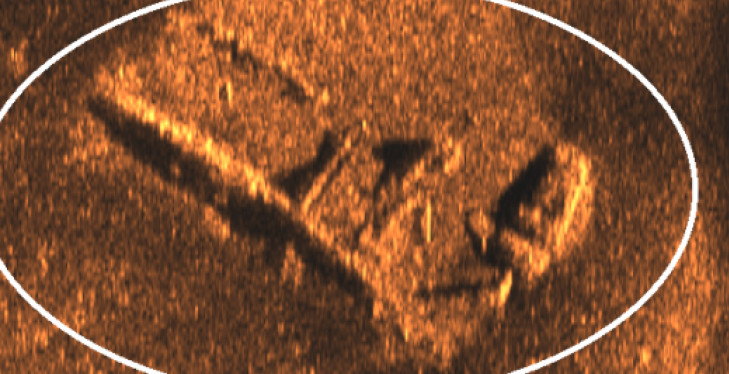The wreckage of a plane found at the bottom of a lagoon in Poland is likely that of an American B-17 Flying Fortress bomber shot down in an attack on a German factory in 1944.
The discovery was made last month with sonar systems deployed in the Szczecin Lagoon, a body of water on the Polish-German border at the mouth of the Oder.
“You can clearly see the wing, engine and fuselage,” says Aleksander Ostasz, director of the Polish Arms Museum in nearby Kołobrzeg, which led the search. “Everything indicates that these could be the remains of the American B17-G bomber shot down on October 7, 1944.”
The specific area was searched after researchers at the museum analyzed documents related to the downing of the plane, which had serial number 44-8046. She had led a US 457th Bombardment Group raid on a synthetic gasoline plant in Pölitz (now Police in Poland).
The five surviving crew members were captured. The bodies of three others have been identified, but three others – Alfred W. Fischer, Gordon H. Haggard, Ancil U. Shepherd – have never been found and their remains may be found in the rubble. The museum has asked members of the crew to get in touch with them.
Ostasz says work will now continue to confirm with “100 percent certainty” that the wreckage belongs to the US bomber. However, for the time being there are no plans to remove it from the bottom of the lagoon, he told the Polish Press Agency (PAP).
Ashes of 8,000 victims found near a former Nazi German camp in Poland
“This is currently one of the most interesting research sites in Europe,” says Andrzej Ossowski, a forensic scientist at the Pomeranian Medical University, who was also involved in identifying the wreck.
Built by German industrial giant IG Farben, the Pölitz factory produced much of the synthetic gasoline that powered the Nazi German war effort. It was regularly attacked by Allied air raids, often using intelligence from the Polish underground.
At the end of the war, Pölitz was transferred within the German territories to Poland, whose borders shifted west, and is now known by the Polish name Police. The destroyed remains of the factory are still visible in the city.
Poland’s tumultuous past has left a landscape of abandoned sites ideal for intrepid tourists, history buffs and ruin hunters.
Presenting our top ten, from a Nazi torpedo platform and secret Soviet nuclear site to a kiosk graveyard https://t.co/TojsDVMuft
— Notes from Poland 🇵🇱 (@notesfrompoland) April 20, 2021
Main image source: Muzeum Oręża Polskiego w Kołobrzegu
Daniel Tilles is Editor-in-Chief of Notes from Poland. He has written on Polish affairs for a variety of publications, including foreign policy, POLITICS Europe, EU observer and Dzennik Gazeta Prawna.




